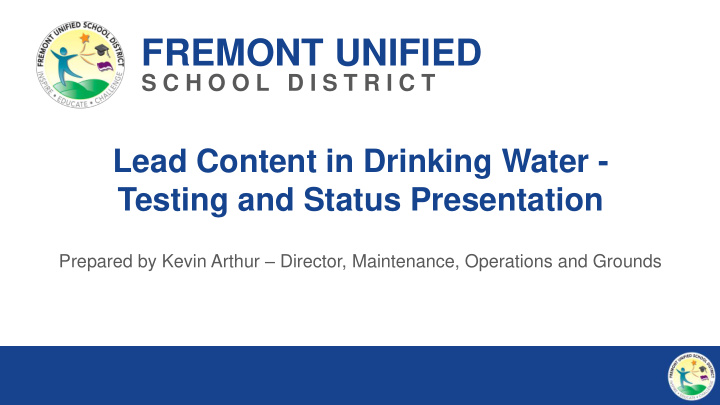



FREMONT UNIFIED S C H O O L D I S T R I C T Lead Content in Drinking Water - Testing and Status Presentation Prepared by Kevin Arthur – Director, Maintenance, Operations and Grounds 1
What are the Standards for Lead in Water? • According to the Health and Safety Code (HSC 116277) and the State Water Resources Control Board Division of Drinking Water (DDW), the action level for lead sampling in schools is 15 parts per billion (ppb). At 15 ppb further testing and actions must be taken. One part per billion is equivalent to one drop in an Olympic-sized swimming pool. 2
Where do our schools fall within these standards? • All of our schools fall well below the 15 ppb action level. Most sites are less than 1 ppb at the ACWD source to the school. • Our highest result was 8.7 ppb. This was from the kitchen sink at Ardenwood Elementary. To access lead sampling results via the California State Water Resources Control Board Website click here. 3
What would it take to improve the lead in the water? What would need to be done? There are three accepted ways to help reduce the amount of lead in water: • Distillation • Reverse Osmosis • Carbon Filtration 4
What is the estimated cost to do these improvements? • Distillation- this is not a feasible option for our school sites. • Reverse Osmosis- Cost to install at every faucet or drinking fountain- $420/faucet x 1900 units = $800,000. • Carbon Filtration- Cost to install at every faucet or drinking fountain- $185/faucet x 1900 units = $350,000. Reverse Osmosis and Carbon Filtration would require ongoing costs as the filters would need to be replaced annually. Questions? 5
Recommend
More recommend